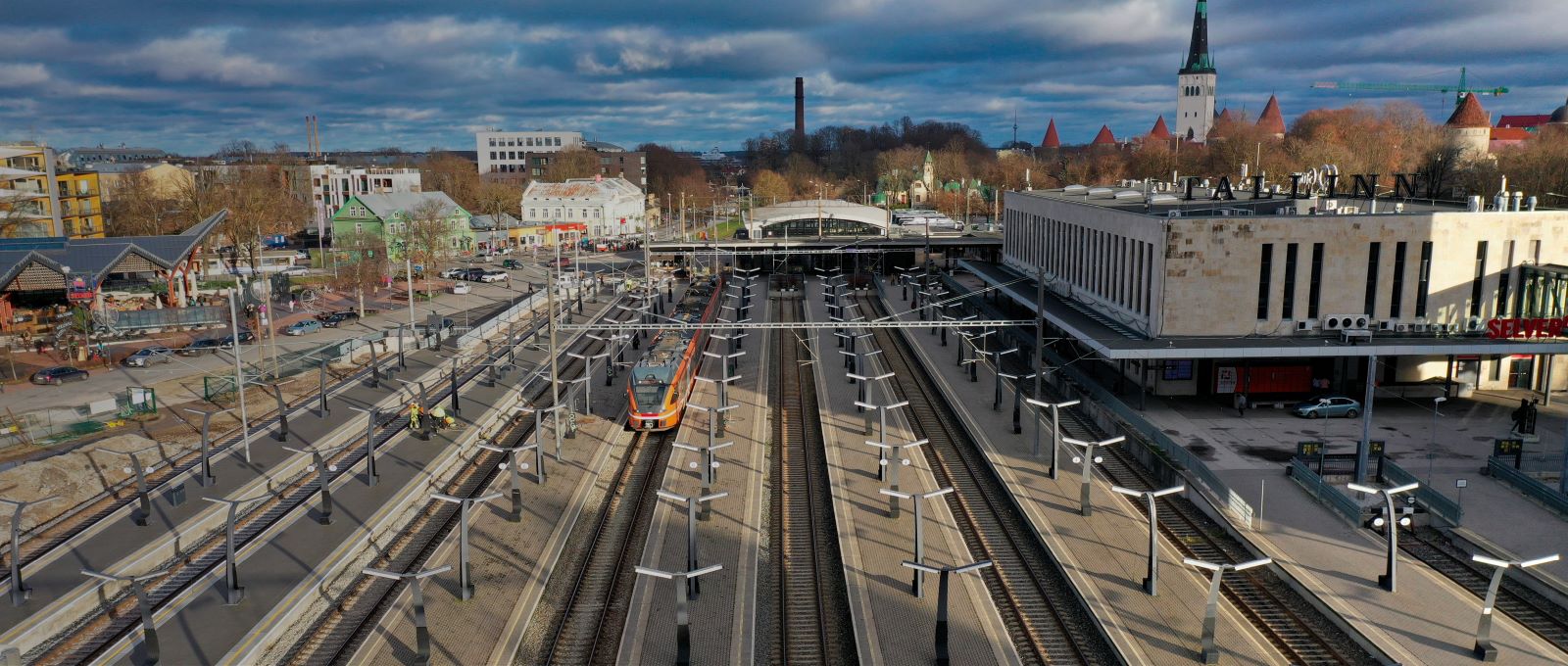Prysmian Group participated in the large-scale renovation project of the Lääne-Harju railway line
Prysmian Group, known in Estonia primarily as a manufacturer of construction and network cables, is also a very strong player in the sector of infrastructure cables. The company participated in the recently completed large-scale renovation project of the Lääne-Harju railway lines and is preparing and contributing to the future – currently the most exciting project in the region is Rail Baltica.
“Railway is not just sleepers and rails, but it also includes very important infrastructure that allows the railway to operate. It is interesting that, while about 150 years ago, 400 kilometres of railway could be completed in a few years, with today’s technology it takes much more time because the projects are very complex. The railway includes traffic lights, counters, track routings and information panels, which are connected with the help of cables in one way or another. All to ensure railway safety!” explains Andero Hännikäinen, sales manager of the industrial segment of Prysmian Group Baltics AS.
He adds that there are many nuances and special solutions in railway projects, in which Prysmian Group has years of experience. “A cable is not just a cable that fits everywhere! For some projects, well-known cables are suitable, while for other projects we have to look for more specific cables in our portfolio, but sometimes no suitable cable has been produced yet and in this case, it is worth asking us for custom solutions. We keep an eye on the development of railways in Estonia and the rest of the world, and the construction of railways fits perfectly with our sustainability principles, meaning that trains are definitely an environmentally sustainable mode of transport that is worth developing. We welcome the plans to have the train run between Tartu and Riga and to develop Rail Baltica, which will open up better logistics opportunities for us to Europe.
The focus of Prysmian Group is to provide innovative solutions for railway projects and to definitely serve more local developments than before. “As rapid urbanisation continues, public transport needs to adapt, and in addition to the infrastructure problems arising from the development of cities, the railway industry must take into account the growing expectations of customers and the rapid development of technology,” says Hännikäinen. “Railway systems have gone through an intensive period of modernisation over the years. Developments require cables with ever higher performance, reliability and safety.”
Prysmian Group has 25 product development centres around the world, where various materials and products are constantly being developed. The company offers medium and low voltage power, communication, control and signalling cables, fibre optic cables, data cables, armoured, shielded, halogen-free and vibration-free cables and a wide range of products to meet the requirements of various specifications in different regions of the world.
The renovation of the Lääne-Harju railway lines was the first railway cooperation project of that size in Estonia for the company. Prysmian Group partnered with AS Eesti Raudtee, the contracting authority, and Mipro Oy, the contract winner, to modernise the traffic control system of the Lääne-Harju railway lines for € 16.5 million. The aim of the project was to make railway management, operation and traffic control as efficient, safe and automated as possible.
The contract partner, the Finnish family company Mipro Oy, has been operating in the field of railway systems and safety in Finland for several decades; the contract for the modernisation of the Lääne Harju traffic control system was the first for the company on this side of the gulf. In addition to railway motion control systems, 150 employees are actively engaged in the field of energy system automation and wastewater systems.
According to Margus Tali, member of the management board of Mipro Eesti OÜ, the company offers tailor-made and turnkey solutions (both hardware and software) for automation systems and railway traffic control systems, starting from the design and supply of materials and equipment to the testing and commissioning of projects. “To date, we have launched seven modern microprocessor-based control systems for centralised power supply to railway stations in Estonia, and as a new solution, we introduced four-signal automatic blocking between two stations in Estonia. Such a system will also allow trains to travel in the opposite direction based on virtual signals,” he explains. “Technology is developing fast, so it’s great to have partners like Prysmian Group who can keep up with us.”
Tali adds that cooperation with Prysmian Group has been very good. “We worked together to build rail motion systems and have taught each other new things. The great thing is that they have a separate department specialising in railway cables, and you can communicate with Prysmian in Estonian and, if necessary, exchange technical information directly with the factory and get a quick solution to any question. Competition in the market is absolutely there, but Prysmian Group is at such a good level that it was possible to negotiate with them even when it was necessary to receive some products faster than planned.”
According to Hännikäinen, the project fell on hard times when supply chains were affected by the corona pandemic and the war. “But we managed. Our advantage is also that, depending on the situation, we can use different factories of the group and change production between units, without bothering customers with these problems. There tends to be a lot of unexpectedness built into long-term projects and, in our experience, even more so in railway construction and wind farms than in general construction. But our trump cards are local representation and international backing. We are local, we know the market and can quickly respond to various questions and changing needs.”
The article was published in ehitusuudised.ee.



